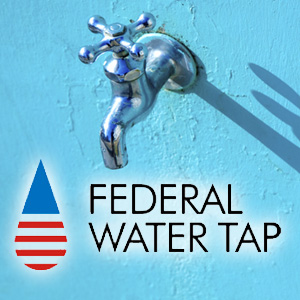Federal Water Tap, December 18: Seven-month Delay for EPA Lead and Copper Rule
The Rundown
The Trump EPA delays, for a second time, publication of lead in drinking water rules. The Senate confirms the top administrator for the EPA Office of Water. Climate scientists assess extreme weather events of 2016. A government watchdog says the Defense Department needs to track the cost of climate change adaptation. The EPA holds meetings on regulatory actions for two drinking water contaminants: lead and perchlorate. And lastly, warm and dry weather continues to hold in the American West.
“It’s one of the greatest environmental threats we face as a country, and one of the things I hope I can work with this committee on in 2018 is a strategy over a ten-year-period to eradicate those concerns. It’s going to be a very ambitious initiative of our agency and it’s something we have various offices in the agency working upon.” — EPA Administrator Scott Pruitt speaking before the House Energy and Commerce Committee about lead protections. (The video starts where Pruitt addresses lead in drinking water.)
By the Numbers
1,579: Federal “regulatory actions” cancelled or delayed in the first 11 months of the Trump administration. Regulatory actions include rules, agency guidance, paperwork requirements and others. (White House)
News Briefs
EPA Delays Lead and Copper Rule
The EPA expects that a revision to federal rules that are designed to reduce the risk of lead in drinking water will be published in draft form in August 2018, a seven-month delay from a timetable announced this summer.
The final rule is not expected until February 2020. This is the second time that the Trump administration has delayed the rule’s publication.
Read more about the delay from Circle of Blue.
EPA Water Official Confirmed
The Senate confirmed David Ross to be the EPA’s top water official. Ross, a lawyer, was the director of the Environmental Protection Unit for the Wisconsin Department of Justice.
Studies and Reports
Is This Climate Change?
It’s a question asked frequently in these years of dread, and scientists are getting better at answering it. Federal climate scientists contributed to a report that examined the carbon imprint on extreme weather events in 2016. They found that three events, all related to high heat, were not possible without the recent increase in greenhouse gas concentrations.
Those instances of high heat were the record global temperature in 2016, record warmth in Asia that year, and a patch of unusually warm ocean water in the northern Pacific.
EPA Hurricane Response
The EPA Office of Inspector General will investigate the agency’s diligence in protecting human health and water sources from contamination during hurricanes Harvey, Irma, and Maria.
Military and Climate Change
The Defense Department, which talks about climate change as a destabilizing force, needs to keep better track of how much the military’s own adaptation measures cost, according to a government watchdog’s report.
The costs in question are not those tallied on the battlefield, according to the Government Accountability Office. Rather, they are the cost of protecting overseas bases against rising seas, floods, erosion, and other changes.
On the Radar
EPA Lead Meeting
The agency will discuss changes to the lead and copper rule with more than a dozen trade associations during a January 8 meeting in Washington, D.C.
EPA Perchlorate Meeting
The agency is under a court order to set a limit for perchlorate in drinking water by October 31, 2018. The scientists who are reviewing the agency’s work will meet on January 29 and 30 to critique the agency’s approach. The meeting will be held in Arlington, Virginia, and teleconference lines will also be available.
Registration is required. Register by sending an email to perchlorate@versar.com with the subject line Perchlorate Peer Review Registration. Include your name, title, affiliation, full address, email, and phone number. The deadline for registration is January 17.
Drought Watch
The first two and a half months of the water year, which starts on October 1, have been quite dry in the Colorado and Rio Grande basins.
Because of warm temperatures, snowpack is in worse condition, even into the Pacific Northwest, where this writer saw bare earth beneath trees at 3,000-feet elevation in the Cascades last week.
Federal Water Tap is a weekly digest spotting trends in U.S. government water policy. To get more water news, follow Circle of Blue on Twitter and sign up for our newsletter.
Brett writes about agriculture, energy, infrastructure, and the politics and economics of water in the United States. He also writes the Federal Water Tap, Circle of Blue’s weekly digest of U.S. government water news. He is the winner of two Society of Environmental Journalists reporting awards, one of the top honors in American environmental journalism: first place for explanatory reporting for a series on septic system pollution in the United States(2016) and third place for beat reporting in a small market (2014). He received the Sierra Club’s Distinguished Service Award in 2018. Brett lives in Seattle, where he hikes the mountains and bakes pies. Contact Brett Walton





